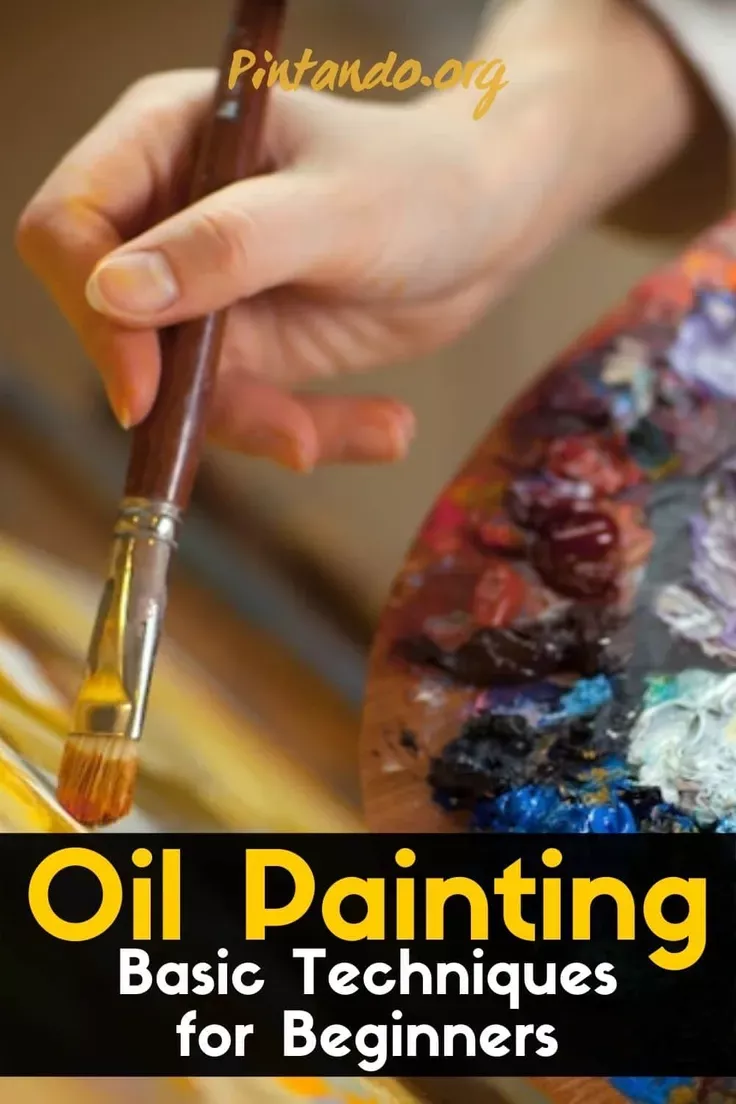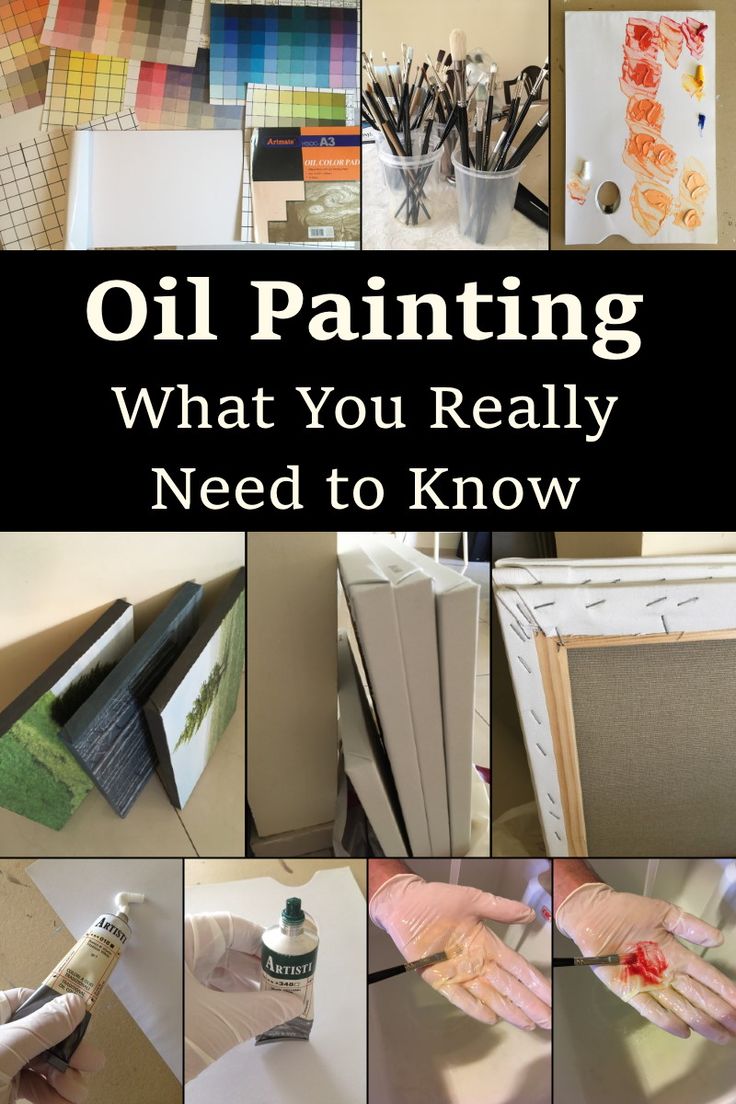Welcome to the vibrant world of oil painting! If you're a beginner, you might feel a bit overwhelmed by all the colors, brushes, and techniques. But fear not! Oil painting is not just for the pros; it's an accessible and rewarding medium for everyone. With a little practice and understanding, you'll unleash your creativity and express yourself like never before. So, let’s dive into the essentials you need to get started on your oil painting journey!
Essential Materials for Oil Painting

Before you pick up that brush, it’s crucial to gather the right materials. Here’s a list of essentials that will set you up for success:
- Oil Paints: Choose a basic set of oil paints. Brands like Winsor & Newton or Gamblin offer great introductory sets.
- Brushes: Look for a variety of brush shapes and sizes, such as:
- Flat brushes for broad strokes.
- Round brushes for detail work.
- Filbert brushes for soft edges.
- Canvas: You can start with pre-stretched canvases or canvas boards. A size around 16x20 inches is perfect for beginners.
- Palette: A wooden or glass palette will work wonders for mixing your colors.
- Palette Knife: Great for mixing paints and creating textures.
- Mediums: Linseed oil or turpentine can help adjust the paint’s consistency and drying time.
- Easel: While not essential, having an easel can make painting more comfortable.
Now that you have your materials, let’s delve a bit deeper into why each one is important:
Oil Paints: Unlike acrylics, oil paints have a rich texture and vibrant colors that blend beautifully. They dry slowly, giving you ample time to work on your painting and make adjustments.
Brushes: The type and shape of your brush can dramatically affect the outcome of your artwork. Experiment with different brushes to see what works best for your style. Remember, quality matters—invest in a few good brushes rather than a huge set of cheap ones.
Canvas: The surface you paint on plays a significant role in your art. Pre-stretched canvases come primed and ready to go, so you can jump right in without any extra prep work.
Palette: Having a spacious palette allows for easy mixing of colors. Keep your palette clean to avoid muddied colors. A quick tip: use a wet palette to keep your paints from drying out too fast!
Palette Knife: This handy tool is perfect for mixing paints and can also be used to apply paint directly onto the canvas for some unique textures.
Mediums: Using mediums can enhance your oil paints. For instance, linseed oil adds gloss and improves flow, while turpentine can thin the paint for finer details.
Easel: A good easel can help you maintain the right angle and height for painting comfortably. It can also be a great space saver!
With the right materials in hand, you’re all set to start experimenting and creating beautiful artworks. Stay tuned for the next sections, where we'll explore techniques and tips to elevate your oil painting skills!
Also Read This: How to Make a Fan at Home: Dailymotion’s Simple Guide
3. Understanding Color Theory in Oil Painting

Color theory is like the secret sauce of oil painting—once you grasp it, your artwork will transform! Let’s dive into the essentials so you can start mixing and matching with confidence.
At its core, color theory revolves around three primary components: the color wheel, color harmony, and the emotional impact of colors. Imagine the color wheel as your best friend; it’s a circular representation of colors, showcasing how they relate to each other.
1. The Color Wheel
- Primary Colors: Red, blue, and yellow are the foundational colors. You can’t create these by mixing others!
- Secondary Colors: Mix the primary colors to create green, orange, and purple.
- Tertiary Colors: Combine primary and secondary colors for hues like red-orange or blue-green.
2. Color Harmony
Color harmony is about creating visually appealing combinations. Here are a few examples:
- Complementary Colors: Colors opposite each other on the wheel, like blue and orange, create vibrant contrasts.
- Analogous Colors: Colors next to each other, such as blue, blue-green, and green, create serene and comfortable designs.
- Triadic Colors: Using three colors evenly spaced around the wheel, like red, yellow, and blue, adds balance and richness.
3. The Emotional Impact of Colors
Different colors evoke different feelings. For instance:
- Red: Passion, energy, and excitement.
- Blue: Calmness, tranquility, and trust.
- Yellow: Happiness, optimism, and creativity.
As you paint, consider the mood you want to convey. A strong understanding of color theory will enable you to select hues that enhance your message. Don't be afraid to experiment and trust your instincts!
4. Basic Techniques for Beginners
Now that you have a grip on color theory, let’s explore some basic techniques that will make your oil painting journey enjoyable and fulfilling.
1. The Wet-on-Wet Technique
This technique involves applying wet paint onto wet paint. It’s perfect for blending colors directly on the canvas. Here’s how to do it:
- Start with a thin layer of paint on your canvas.
- Add your next color, allowing it to mix directly with the first.
For a dreamy effect, use a soft brush to blend the colors. Think of a beautiful sunset—this is how you achieve those smooth transitions!
2. Glazing
Glazing involves applying a transparent layer of paint over a dry layer. It’s great for enhancing depth and luminosity. Here’s a quick guide:
- Let your first layer dry completely.
- Mix a small amount of paint with a medium like linseed oil to create a glaze.
- Apply the glaze with a soft brush, allowing the underlying colors to shine through.
3. Impasto
For a textured, dynamic look, try the impasto technique. This involves applying thick layers of paint. Here’s how you can master it:
- Use a palette knife or a stiff brush to apply thick paint directly onto the canvas.
- Experiment with different strokes and patterns to create texture.
Remember, practice is key! Don’t be discouraged by initial attempts; every stroke helps you grow as an artist. Keep trying these techniques, and soon you’ll find your unique style emerging!
 admin
admin








